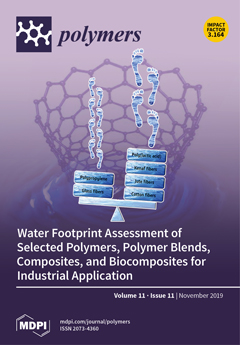A novel poly-geminal dicationic ionic liquid (PGDIL)-TiO
2/Au composite film electrode was successfully prepared by electrochemical polymerization of 1,4-bis(3-(m-aminobenzyl)imidazol-1-yl)butane bis(hexafluorinephosphate) containing polymerizable anilino groups in the electrolyte containing nano-TiO
2. The basic properties of PGDIL–TiO
2/Au composite films were studied
[...] Read more.
A novel poly-geminal dicationic ionic liquid (PGDIL)-TiO
2/Au composite film electrode was successfully prepared by electrochemical polymerization of 1,4-bis(3-(m-aminobenzyl)imidazol-1-yl)butane bis(hexafluorinephosphate) containing polymerizable anilino groups in the electrolyte containing nano-TiO
2. The basic properties of PGDIL–TiO
2/Au composite films were studied by SEM, cyclic voltammetry, electrochemical impedance spectroscopy, and differential pulse voltammetry. The SEM results revealed that the PGDIL–TiO
2 powder has a more uniform and smaller particle size than the PGDIL. The cyclic voltammetry results showed that the catalytic effect on electrochemical oxidation of hydroquinone and catechol of the PGDIL–TiO
2 electrode is the best, yet the
Rct of PGDIL–TiO
2 electrode is higher than that of PGDIL and TiO
2 electrode, which is caused by the synergistic effect between TiO
2 and PGDIL. The PGDIL–TiO
2/Au composite electrode presents a good enhancement effect on the reversible electrochemical oxidation of hydroquinone and catechol, and differential pulse voltammetry tests of the hydroquinone and catechol in a certain concentration range revealed that the PGDIL–TiO
2/Au electrode enables a high sensitivity to the differentiation and detection of hydroquinone and catechol. Furthermore, the electrochemical catalytic mechanism of the PGDIL–TiO
2/Au electrode was studied. It was found that the recombination of TiO
2 improved the reversibility and activity of the PGDIL–TiO
2/Au electrode for the electrocatalytic reaction of HQ and CC. The PGDIL–TiO
2/Au electrode is also expected to be used for catalytic oxidation and detection of other organic pollutants containing –OH groups.
Full article






